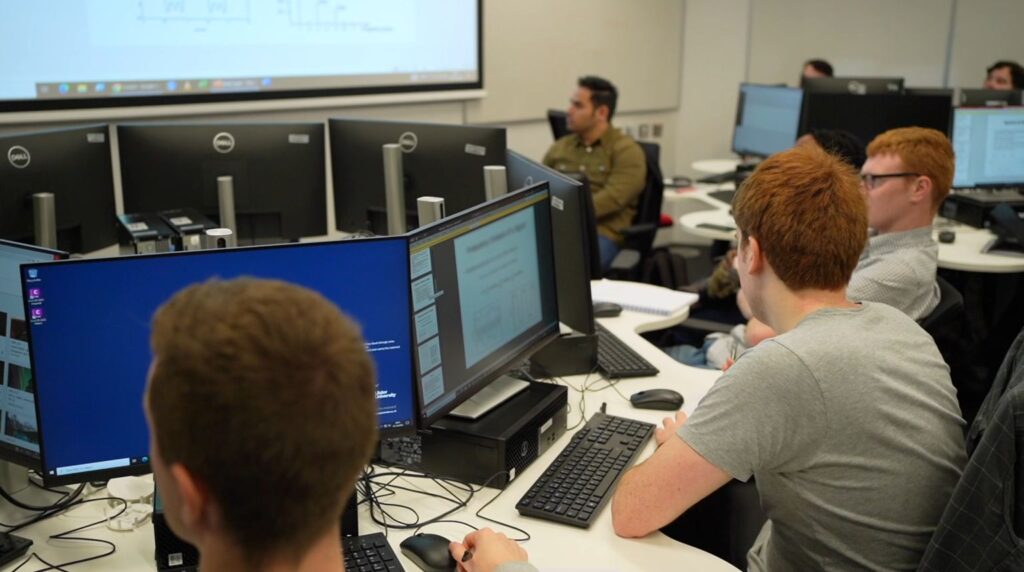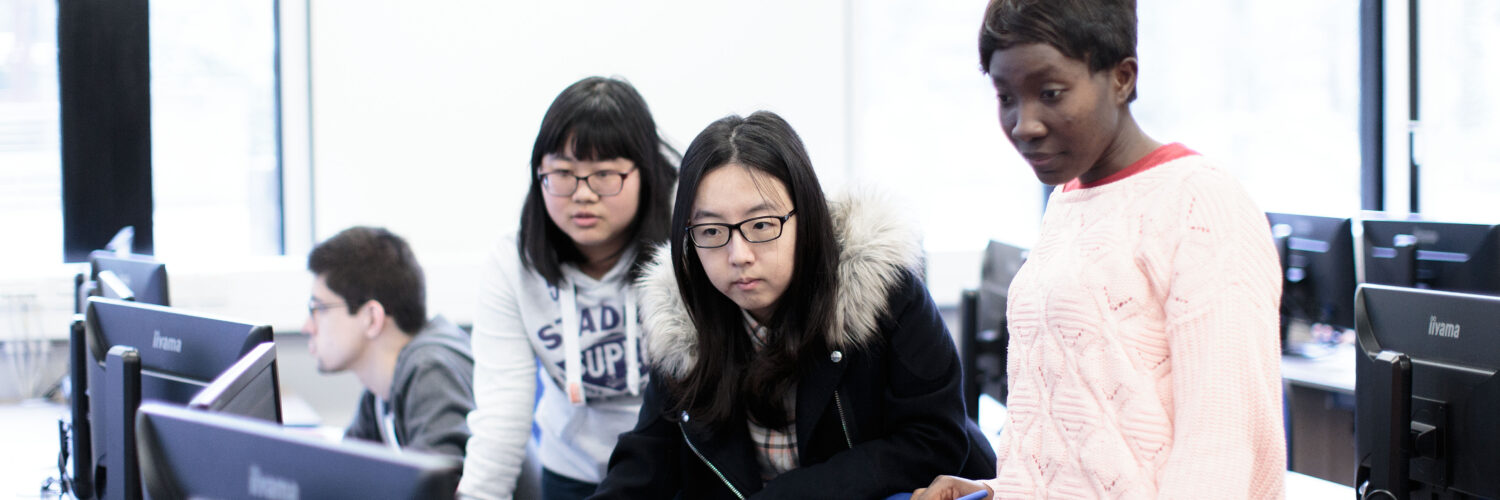by Selim Bozkurt, Ulster University, Northern Ireland, UK.
At Ulster University, we aim to keep education universal and inclusive aligning with the values of the university, Integrity, Collaboration, Enhancing Potential, and Inclusion. Therefore, we continuously update our learning materials and sources using technological and digital tools focusing on the needs of our students. At Ulster University, one of the modules in which students learn computational simulations using dedicated software packages and do practical examples during laboratory sessions is Mechanical System Analysis. We have recently implemented learning materials enhanced with visual and verbal elements to improve learning outcomes in the Finite Element Analysis classes which are a part of the Mechanical System Analysis module. We asked for feedback from the students after using the new learning materials in the Finite Element Analysis classes using a survey.
Topics from Statics, Dynamics and Finite Element Method are blended in the Mechanical System Analysis module which is offered at the School of Engineering at Ulster University in the final year of the Engineering Programme. Student demographics in the Mechanical System Analysis module include local and foreign students who enrolled in the engineering programme at Ulster University and exchange students from the Shaanxi University of Science and Technology in China. So, not only do the topics taught pose challenges to the students but also language barriers exist, at least for some of the students. Using traditional learning materials such as PDF files showing how to implement a Finite Element Analysis problem in the software packages and showing the solution procedure step by step results in delays in completing tutorial examples during class hours. Also, some of the students do not work on tutorials described in long documents.
To support the students with enhanced digital learning materials we developed video tutorials and structured them according to the module content. We blended face-to-face teaching with video-based active learning in the laboratory sessions in the 2022/23 academic year. We also kept the previously existing PDF tutorials to provide a more universal learning environment. The Finite Element Analysis classes are structured to allow students to work on the tutorials independently in the computer laboratory under the supervision of an instructor after a brief lecture during each session. The instructor answers questions from each student to help them with practical examples during the laboratory sessions in the Finite Element Analysis classes.
We evaluated student opinions using a three-level Likert scale and asked questions about the usefulness of the previously existing step-by-step PDF tutorials and newly implemented video tutorials in the Finite Element Analysis classes. Forty-five students participated in the survey. We analysed student answers in the survey using statistical methods to understand correlations between the first language spoken by the students and the usefulness of the step-by-step PDF tutorials and video tutorials.

English was the first language of twenty-three students whereas twenty students spoke Mandarin as their first language also two students spoke other languages as their first language. All the students studied Mechanical Engineering.
Seventeen English-speaking students found video tutorials very useful whereas six English-speaking students found them useful. On the other hand, twelve English-speaking students found PDF tutorials very useful whereas eleven English-speaking students found them useful. Fifteen Mandarin-speaking students found video tutorials very useful whereas four Mandarin-speaking students found them useful. On the other hand, eleven Mandarin-speaking students found PDF tutorials very useful whereas eight Mandarin-speaking students found them useful. Also, two students speaking other languages found video tutorials very useful. Overall, thirty-four students thought that video tutorials were very useful to support their learning in the Mechanical Systems Analysis module.
One-to-one conversations with students revealed that students use video tutorials not only to study practical examples but also to catch up with class during the time that the instructor is busy helping the other students. Video tutorials were available during the entire semester on the Blackboard Learning platform to download or follow after the class allowing students to study in an asynchronous mode. This was particularly beneficial for the students who could not participate in every laboratory session.
As a conclusion, the majority of students found the video tutorials for learning Mechanical system Analysis based on the Finite Element simulations to be highly beneficial, irrespective of their primary language. The feedback from students suggested instructional video tutorials can be used to improve learning outcomes in courses with computer applications such as Finite Element Analysis while blending face-to-face teaching. Students can benefit from a blended teaching strategy regardless of their first language.
This article is based on the paper “Selim Bozkurt, Use of instructional videos to teach mechanical systems analysis based on the finite element method in a class with local and overseas students. Engineering Reports. 2024;e12880. doi:10.1002/eng2.12880”

Author
Selim Bozkurt, Lecturer at Ulster University, School of Engineering, Belfast, Northern Ireland, UK.














